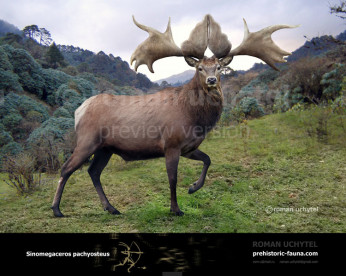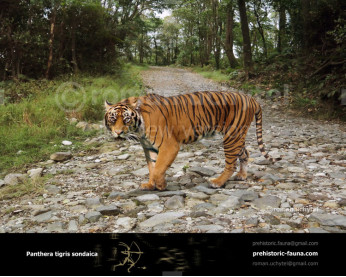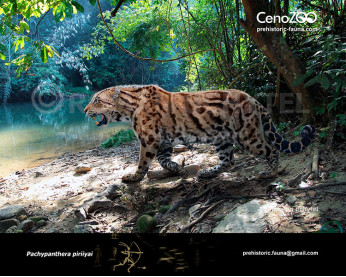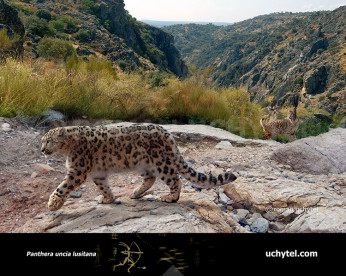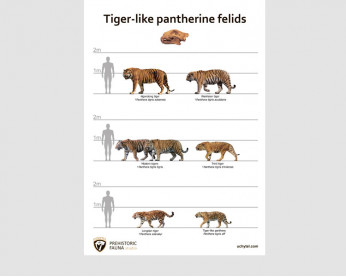Longdan tiger (Panthera zdanskyi)
166166Longdan tiger (Panthera zdanskyi Mazak et al., 2010)
Order: Carnivora
Family: Felidae
Time period: Early Pleistocene of Asia (China, about 2.55–2.16 million years ago)
Size: 1.6 m in length, 75 cm in height, 80 kg of weight.
Panthera zdanskyi is an extinct species of pantherine known from the Gansu province of northwestern China, the skull of which is dating to the Gelasian stage of the earliest Pleistocene, about 2.5 million years ago. The skull is a little smaller than the head of today's tigers - about the size of a jaguar - but it's very recognisable as the same species we know today. It's the oldest complete skull ever discovered of a 'pantherine' big cat - the big cats we know today - and may help to understand how today's animals evolved. It's got conspicuously long, large upper canines which proportionally outsize those of jaguars, leopards and lions and even a bit longer than tigers. Apart from elongated upper canines, there seems to be several morphological characteristics such as relatively elongated and prognathoustic muzzle, the less domed 'forehead' that are superficially paralelling features of sabertoothed cats rather than tigers.
Expectedly, the Panthera zdanskyi emerged as the most primitive tiger separated by a long distance from all other tiger subspecies. It is as an early branch of the tiger lineage, ' said the researchers. It seems likely that this tiger's diet would have been similar to that of today's and would have included ungulates such as deer and pigs. The evolutionary trend of increasing size in the tiger lineage is likely coupled its prey evolving larger body sizes.
Longdan tiger (Panthera zdanskyi Mazak et al., 2010)
Order: Carnivora
Family: Felidae
Time period: Early Pleistocene of Asia (China, about 2.55–2.16 million years ago)
Size: 1.6 m in length, 75 cm in height, 80 kg of weight.
Panthera zdanskyi is an extinct species of pantherine known from the Gansu province of northwestern China, the skull of which is dating to the Gelasian stage of the earliest Pleistocene, about 2.5 million years ago. The skull is a little smaller than the head of today's tigers - about the size of a jaguar - but it's very recognisable as the same species we know today. It's the oldest complete skull ever discovered of a 'pantherine' big cat - the big cats we know today - and may help to understand how today's animals evolved. It's got conspicuously long, large upper canines which proportionally outsize those of jaguars, leopards and lions and even a bit longer than tigers. Apart from elongated upper canines, there seems to be several morphological characteristics such as relatively elongated and prognathoustic muzzle, the less domed 'forehead' that are superficially paralelling features of sabertoothed cats rather than tigers.
Expectedly, the Panthera zdanskyi emerged as the most primitive tiger separated by a long distance from all other tiger subspecies. It is as an early branch of the tiger lineage, ' said the researchers. It seems likely that this tiger's diet would have been similar to that of today's and would have included ungulates such as deer and pigs. The evolutionary trend of increasing size in the tiger lineage is likely coupled its prey evolving larger body sizes.

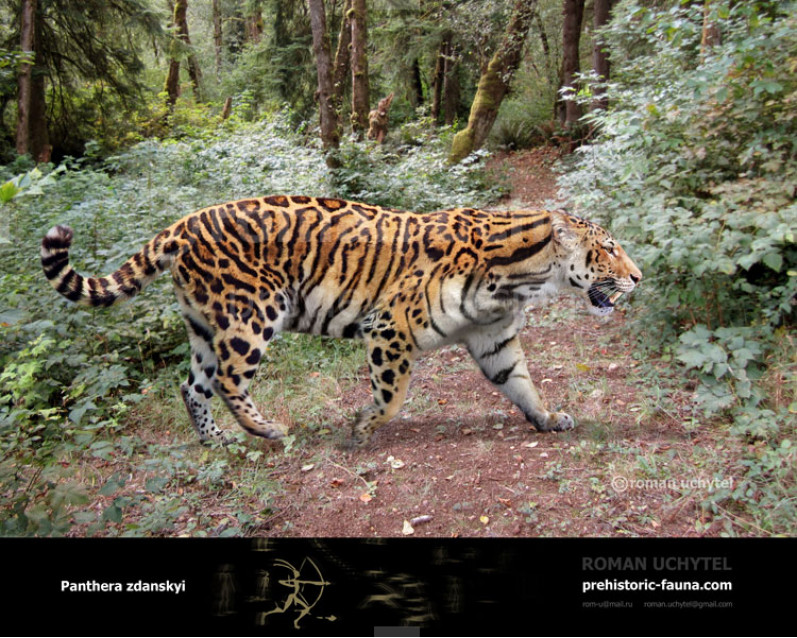
-797x638.jpg)
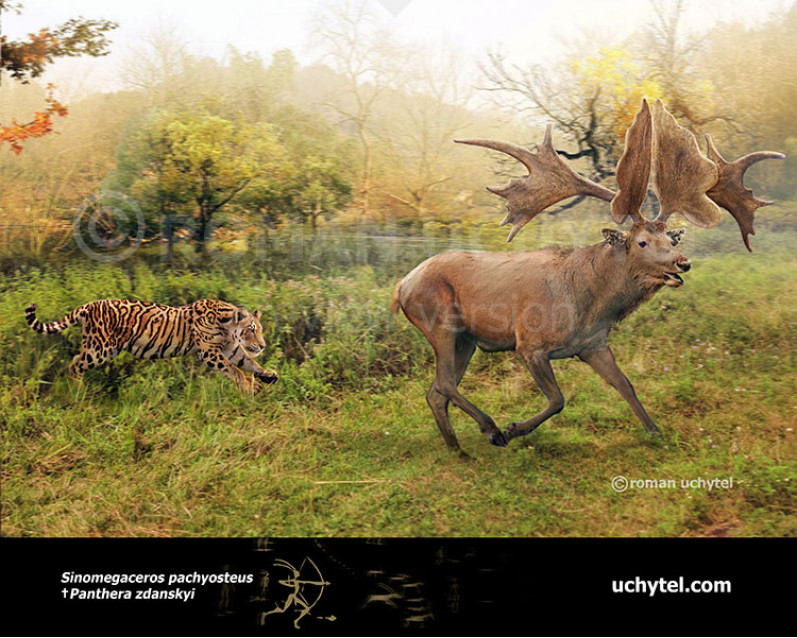
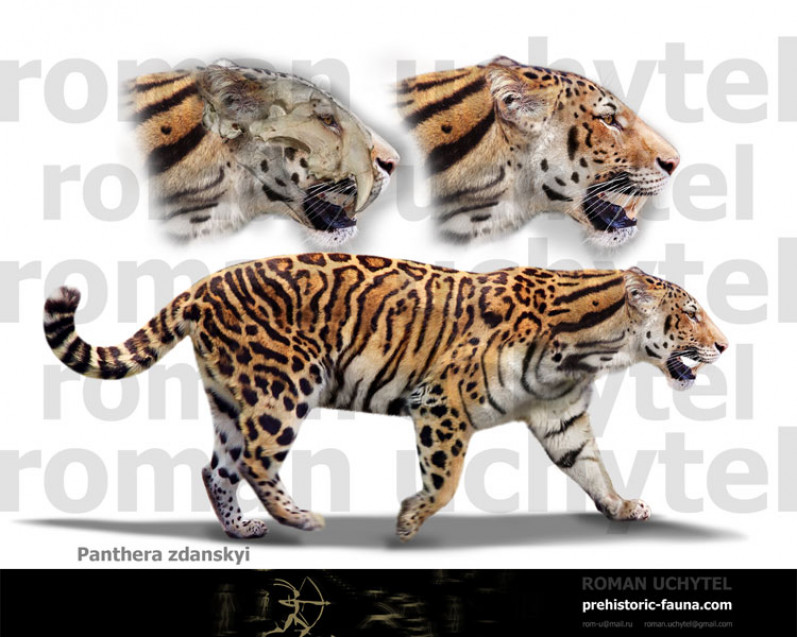

-70x56.jpg)


-346x277.jpg)
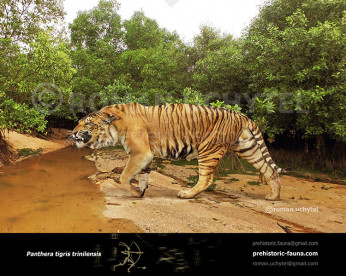
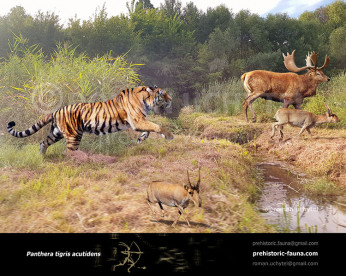
-346x277.jpg)
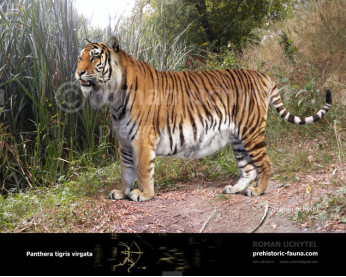
-346x277.jpg)
